Report

This article is Section 1 of Bain's 2020 Global Corporate M&A Report. Explore our latest annual M&A report here.
Worries about the global economy and a potential downturn dominated executive discussions in 2019. There were major geopolitical issues to deal with, too, headlined by the chaotic path to Brexit and US-China trade tensions. Executives also grappled with rising regulator intervention in dealmaking that dampened spirits, most notably in Europe. While it has never been easy being an M&A decision maker, the past year introduced multiple layers of unease.
Resilience in M&A
The numbers bear this out. The expectation going into 2019 was that a moderation in deal volumes would resume. The year, however, turned out to be surprisingly resilient. The deal count for 2019 was only 2% lower than 2018, and deal values increased by 1% year over year (see Figure 1.1). Strong megadeal activity in the US in the first half of 2019 was balanced out by a slower second half. In Europe and Asia, the opposite occurred: The year started slowly and then started to pick up.
Global strategic M&A deal value and volume were on par with 2018
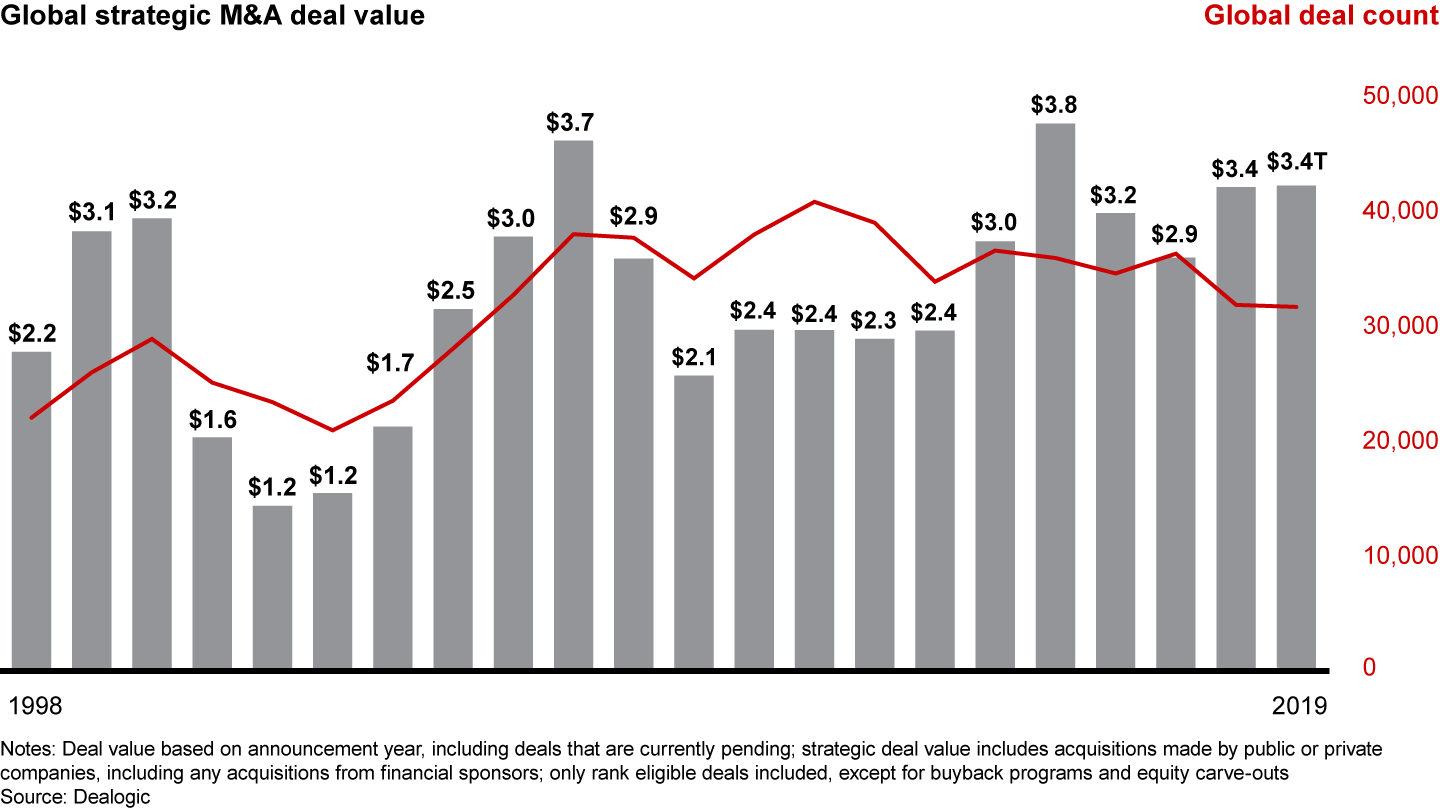
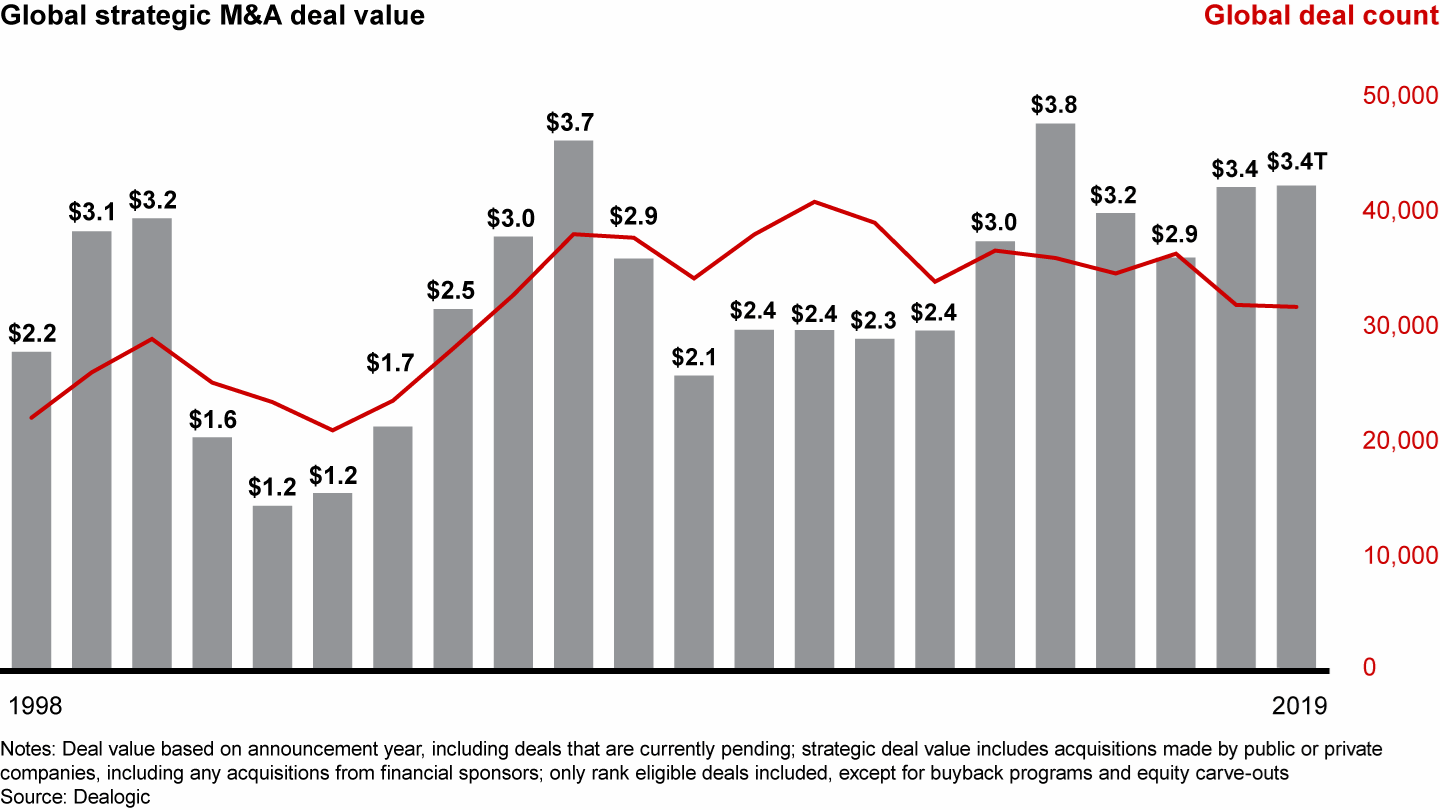
In a bit of a surprise, at least to us, transaction multiples are now on par with the 15-year average (see Figure 1.2). This is true across all industries except technology and consumer products, where multiples are still higher than the long-term average—a situation that could change in a world of slowing economic growth.
Transaction multiples have corrected from the 2017 peak
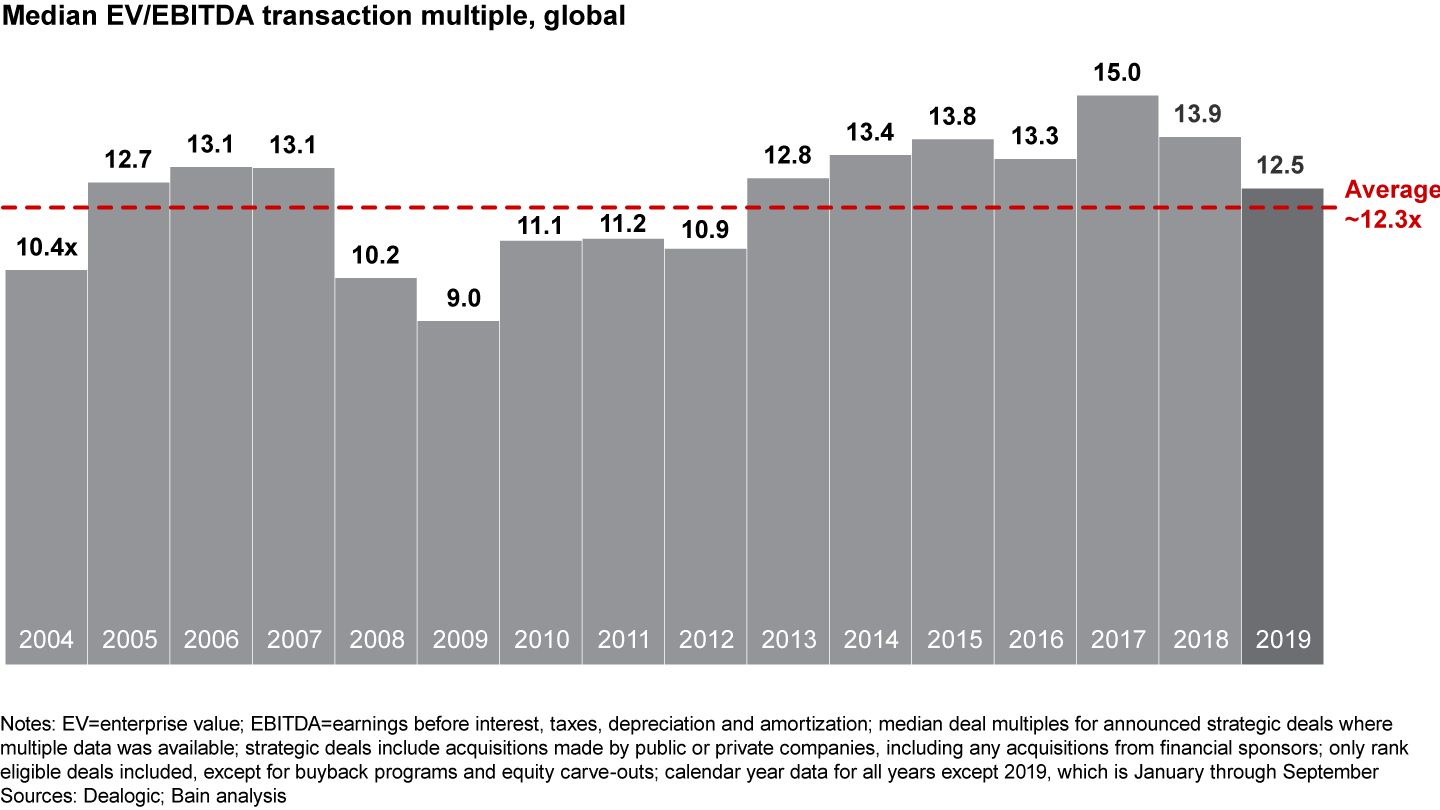
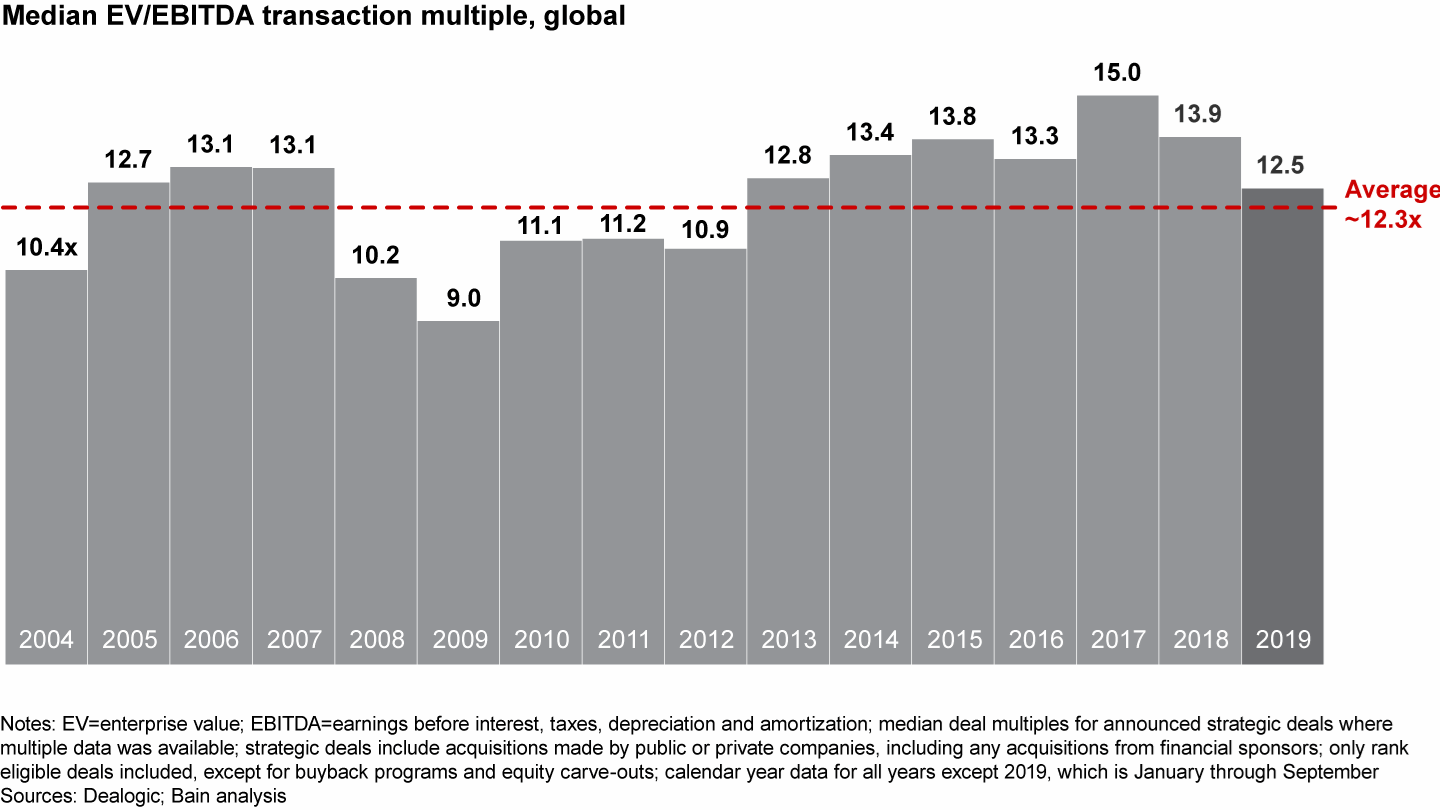
Amid trade wars and higher regulatory scrutiny on grounds of national interest, cross-regional deal value declined by 31% during the first nine months of 2019 vs. the same period in 2018 and continued a three-year decline in volume.
Despite slowing economic growth in 2019, capital conditions remained favorable, with low interest rates. We expect the interplay of economic growth and cost of capital to continue to determine the fate of deal volumes in the year ahead.
Scope deals continue to gain momentum—for now
Within this moderate M&A environment, the nature of dealmaking continues to evolve. Historically, the biggest deals were rooted in scale economics, capturing the benefits of cost and customer overlap by becoming a larger player in an industry. As we introduced in last year’s report, the fundamental justification for many deals has now shifted to a scope orientation—that is, more deals are predicated on getting into faster-growing lines of business or acquiring new capabilities. That trend intensified in 2019. Often the intent is to garner both growth and capabilities.
Scope deals comprised nearly 60% of all large deals in the year ended September 2019 vs. 40% in 2015 (see “About the methodology” for more details on Bain’s approach to classifying approximately 1,200 strategic deals). Among deals with disclosed values of more than $1 billion, the absolute dollar amount spent on scope deals rose 50% from 2015 to 2018, while the dollar amount spent on scale deals halved.
This rise in scope M&A is a response to business model disruption and low growth. Top-line growth rates continue to trend downward for the leading publicly traded companies (see Figure 1.3).
Revenue growth rates stumbled again in 2019, to around the low-single-digit mark
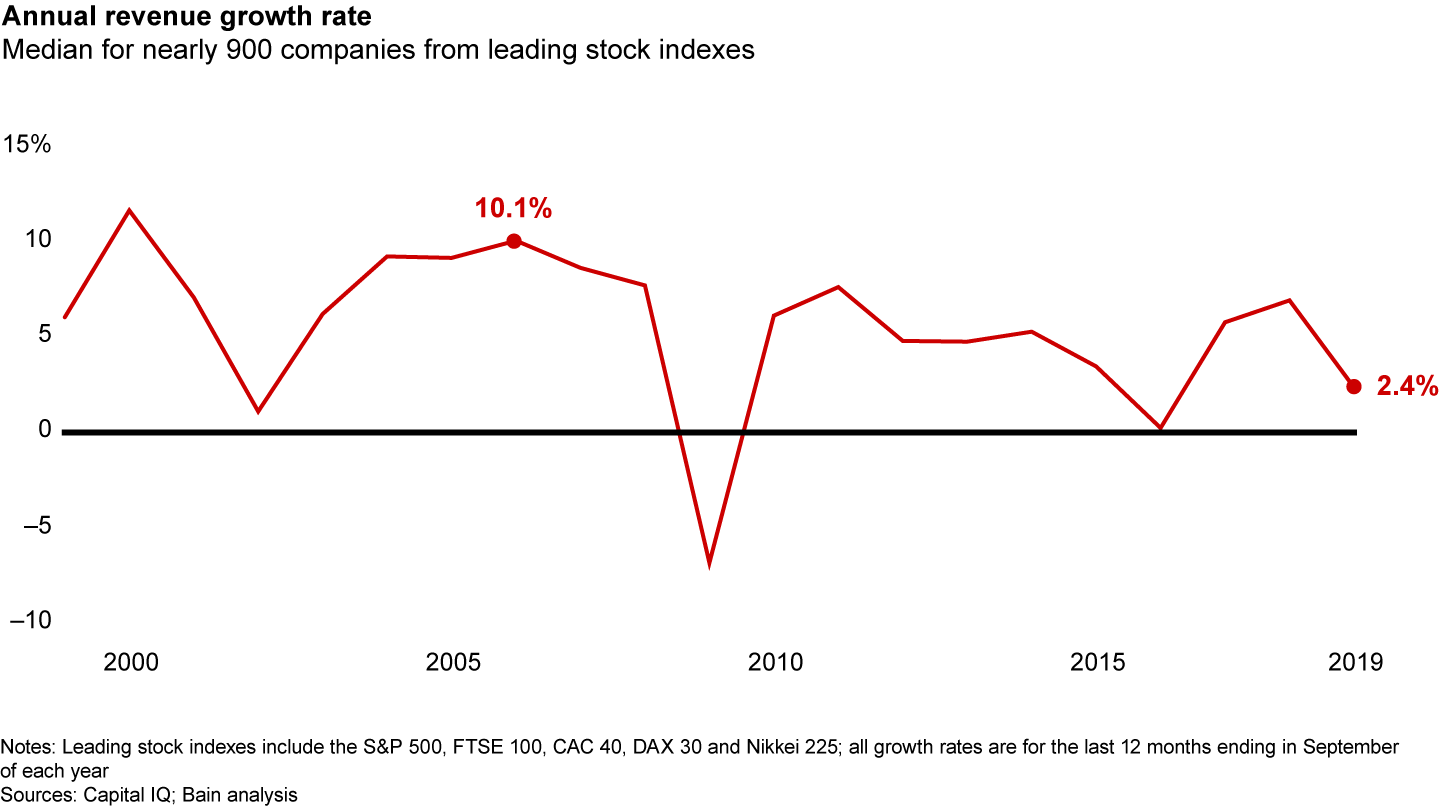
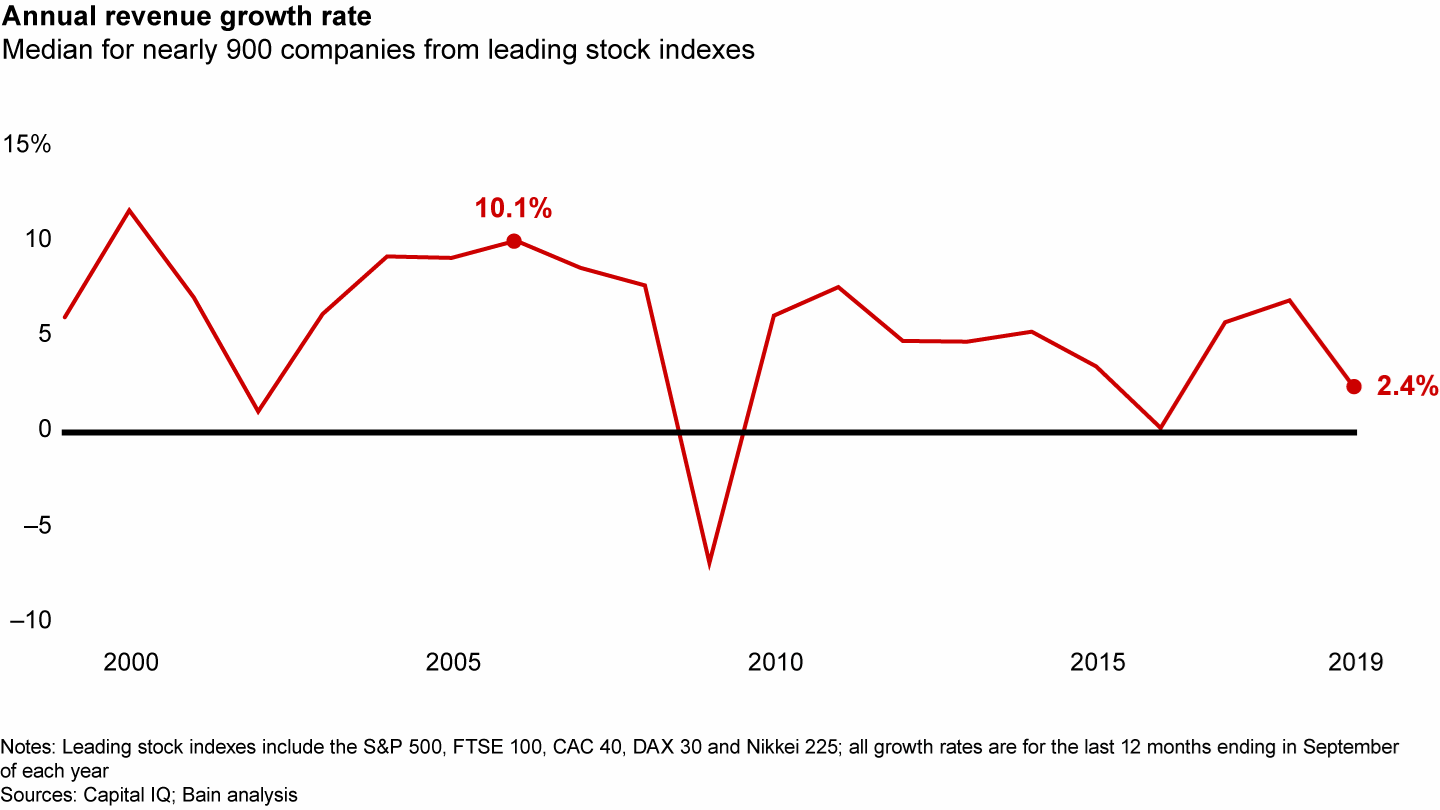
The trend toward scope M&A also indicates that most executives are engaged in a strategic shuffling of portfolios. Many are grappling with the need to migrate their portfolios from successful but slower-growing legacy businesses to new growth engines.
With economic concerns top of mind, it is good to remind ourselves that recessions are a moving target and that for most of us, market timing has not been a winning strategy. What we do know for sure is this: Every downturn produces its winners and losers. The winners prepare by using scale and scope M&A and divestitures proactively to reshape their portfolios.
This article is part of Bain’s 2020 Global Corporate M&A Report. Explore the contents of the report here or download the PDF to read the full report.
-
About the methodology (Click to expand)
About deal classification—scale and scope deals
To understand the nature of M&A activity, we first identified the top 250 strategic deals of each year (top 165 strategic deals for 2019 year-to-date until September, since the analysis was concluded in October). From the initial list of deals with values greater than $1 billion, as reported by Dealogic, we excluded nonstrategic deals. These include asset or property acquisitions, financial investments, internal reorganizations, and minority stake acquisitions.
We then classified the strategic deals into scale or scope deals based on our proprietary framework applied consistently across the years. The proprietary framework uses the stated strategic rationale by the acquirer at the time of announcement to identify the key elements of the deal thesis. Based on these elements, the deals were categorized as scale or scope deals.Scale deals are intended to strengthen market leadership and lower cost position through the benefits of scale, such as cost synergies. Scope deals are intended to accelerate top-line growth by entering or expanding into faster-growing market segments, or by bringing in new capabilities. In reality, some deals are a blend of both scale and scope; however, the vast majority lean toward one or the other (see chart).
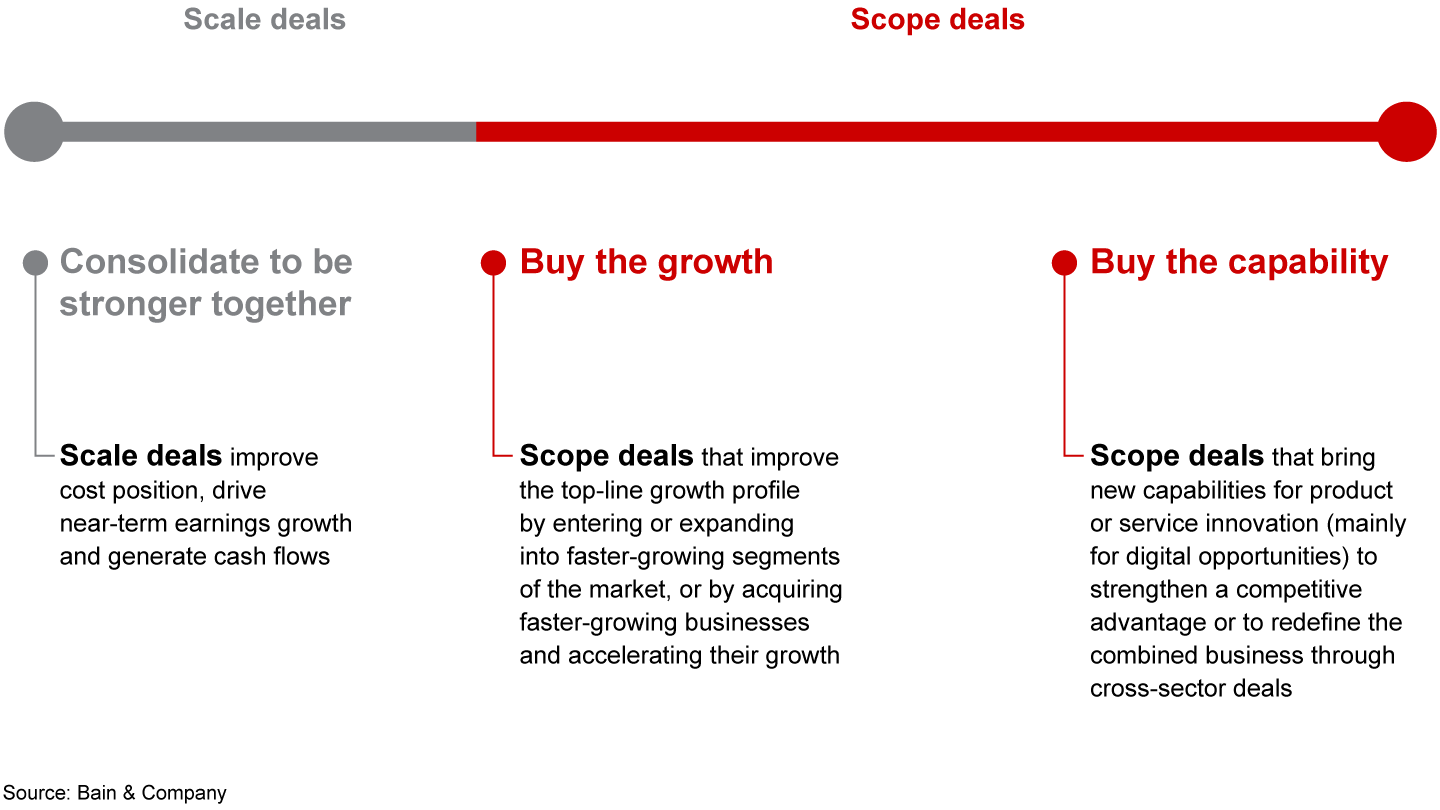
About the M&A and Divestitures senior executive survey, 2019
In partnership with the Gerson Lehrman Group, we conducted a survey of 247 senior executives on the topic of corporate M&A and divestitures. The survey ran throughout July 2019 in the US, UK, Germany, France, China, Australia and Japan. Survey participants were from companies with greater than $500 million in annual revenue and held senior executive roles in the capacity of CEO, CFO or head of strategy/business development/M&A.
The survey covered the topics of portfolio management best practices, divestiture decision making and keys to success as well as M&A success drivers for scale and scope deals.
